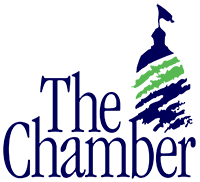Events Upcoming
New Members
In Hybrid Work, Don't Rely on Just One Aspect of Productivity
Productivity paranoia is the latest trendy term being used to emphasize problems HR leaders know have always existed. The catchphrase describes management's fear or belief that employee output declines in work-from-home arrangements.
"In remote settings, leaders can't physically see all the work that is being done and have less face time with employees, which has heightened fears that productivity levels are not being met," said Kelly Griffith, global director of coaching services for EZRA, a U.K.-based app for staff development.
The buzzword emerged from Microsoft's Work Trend Index. The report revealed that 87 percent of all employees, remote and in-person, feel productive at work. Yet only 12 percent of CEOs believe this to be true.
Studies offer conflicting findings: A Stanford study of 16,000 employees found productivity increased by 13 percent when staff worked from home. Prodoscore Research reported a 47 percent increase in efficiency.
However, business leaders may be on to something: Paul Schempp, a leadership speaker and research professor at the University of Georgia, pointed to consistent research from 2020, 2021 and 2022 that confirms CEOs' fears appear to be real.
"I have little doubt that leaders have both sensed and seen the drop in productivity," he said. "Leaders are often held accountable for the team's productivity. Do these leaders have the skills or resources to combat it? Probably not, as 'remote leadership' is a new frontier and not taught in most business schools."
Remote work was a seismic shift for many leaders, and not all organizations had the structure, knowledge and tools in place to support the unprecedented change. But leaders may be focusing too much on just one aspect of productivity, experts say.
"Whether employers are prone to micromanagement or not, the inability to regularly observe employees during working hours has led leaders to assume the worst of their employees and has led to a hyperfocus on monitoring productivity levels," said Debby Carreau, YPO board member and founder and CEO of InspiredHR, a consultancy firm in West Vancouver, British Columbia, Canada.
Rather than honing in on being able to see their workers working, leaders can look to other outcomes that indicate productivity.
For example, Carreau said, "Employee engagement is a strong measure for overall productivity. When workers feel like they are more than just a number, they care more about their work and that is ultimately what drives growth."
Here are three approaches to consider:
Get back to basics. HR leaders, starting with the CHRO, need a get-back-to-basics organizational design that drives accountability and focus among leaders and employees, according to Karli Waldon, president and chief operating officer of Talent War Group, a management consulting and executive search firm in Austin, Texas. When leaders are paranoid about employees working from home, it suggests a lack of skills to manage people properly, she said.
"While organizations, in general, are maintaining (or even expanding) their productivity expectations, many are not providing leaders with resources to train, motivate, monitor, coach or mentor their direct reports," Schempp added.
Investing in professional development or coaching helps HR professionals and managers overcome this skills gap. Griffith's organization has found that when supports like professional coaches are brought in, there is a 28 percent increase in prioritization and an 18 percent increase in productivity.
Measure outcomes, not outputs. Measuring outcomes and achievements rather than hours spent is essential. Setting clear, measurable expectations, goals and timelines is vital to overcoming feelings of distrust on both sides.
"Regular check-ins enable HR leaders and employees to monitor productivity and embrace achievement of those goals and objectives regularly," Waldon said.
"Focus on what employees accomplish and not on when they are doing it," Schempp added. "[Even though] you do not see your remote workers every day or every month, they are on the front lines keeping your business running. To keep them productive, they need encouragement, support, appreciation and care."
If you're concerned your team is coasting, Carreau suggested starting a conversation to understand the employee's perspective.
"I also encourage employers to not just focus on work and productivity. With remote work, it takes additional effort to gauge how people are feeling," she said. "Sometimes you need to pause and take a moment to focus on your people beyond measuring their output."
Be cautious of productivity tracking software, Increasingly, companies are using technology to monitor and measure employee productivity. These tools and practices may actually hurt productivity.
"Surveillance not only makes people feel like a cog in a machine, but it can also shatter trust and employees will start to disengage if they don't feel mutual trust," Carreau said.
Plus, the metrics provided by these surveillance techniques are proving to be unreliable, according to Griffith.
"We're seeing that employees who are subjected to close monitoring practices are showing signs of increased burnout," she said. "Employers who resort to surveillance techniques that provide a narrow lens for productivity risk losing high-performing talent altogether."
Instead of tracking an employee's online "presence," Waldon suggested focusing on communication skills, open dialogue and genuine questioning for deeper understanding.
She recommended asking:
- Do the resources available still provide value to employees?
- Is there anything more we can do to increase and overhaul productivity?
- What expenses are unnecessary with a new work environment—and how can we reapply those resources toward building teams?
"The pandemic forced us to reassess how we approach work and life, and long-term hybrid arrangements are a result, but the ways we measure performance need to adapt in parallel," Carreau said. "Organizations who are able to manage by objectives and deliverables as opposed to time will be much more successful."
Article provided by Society for Human Resource Professionals (SHRM).

